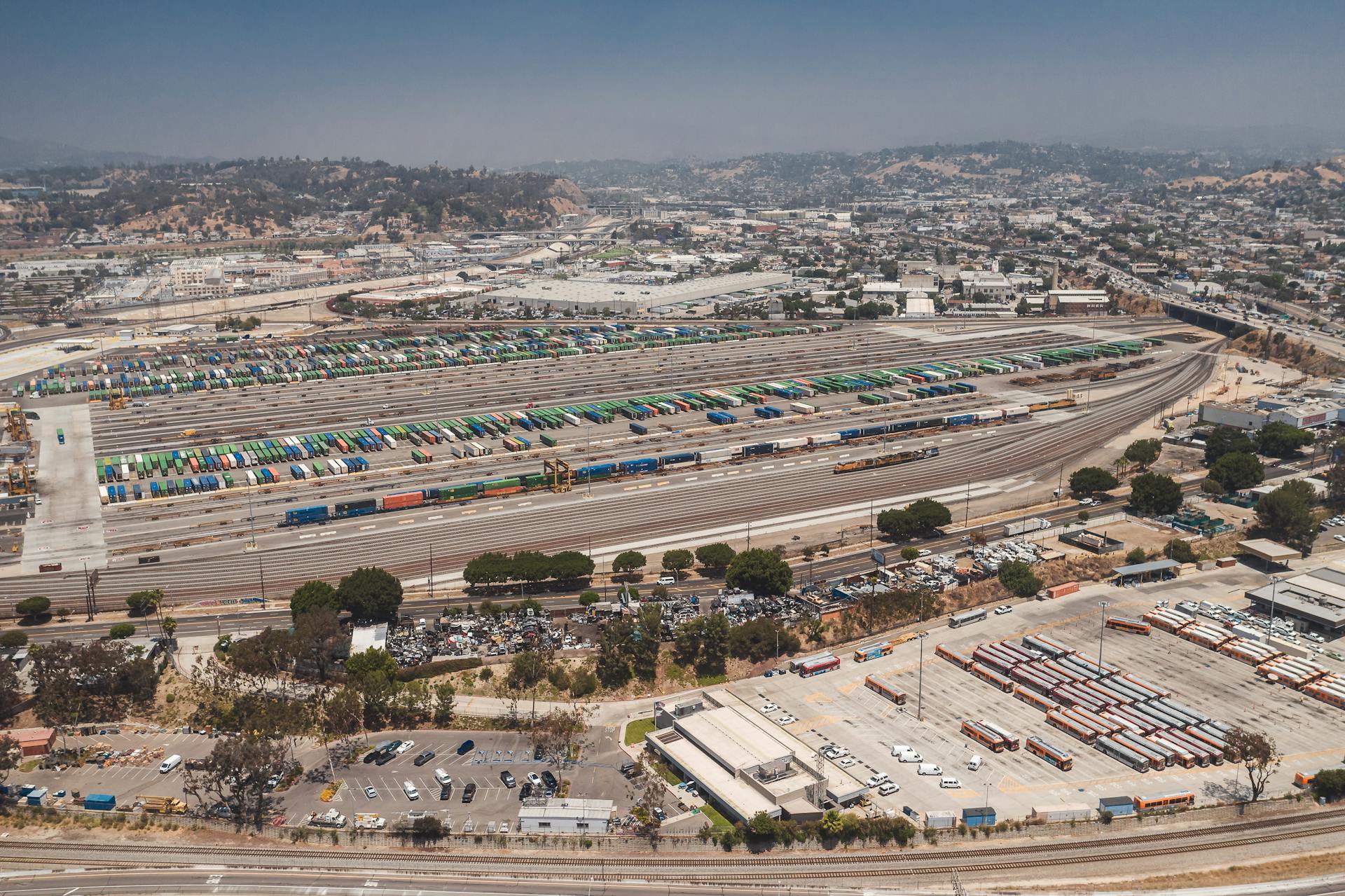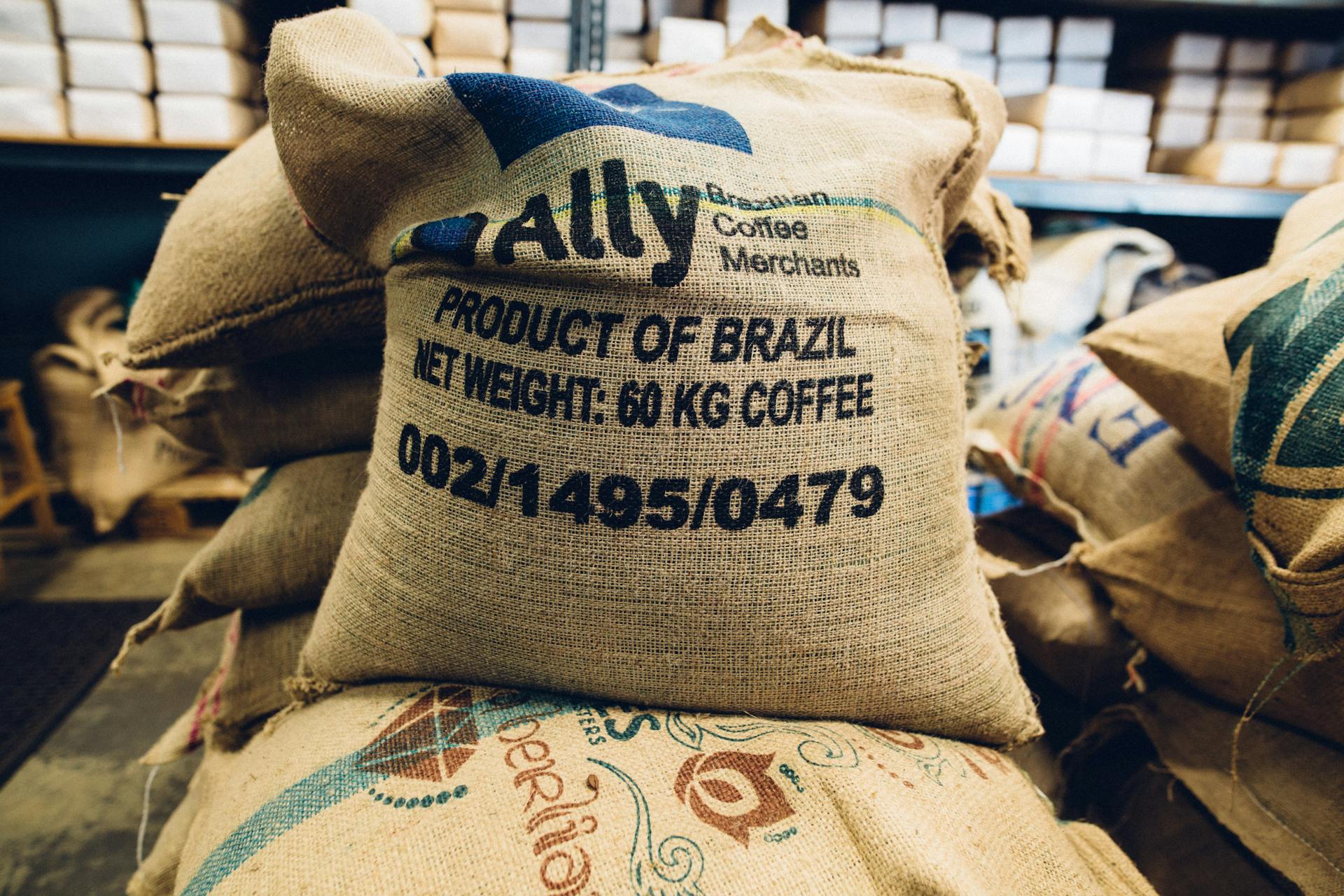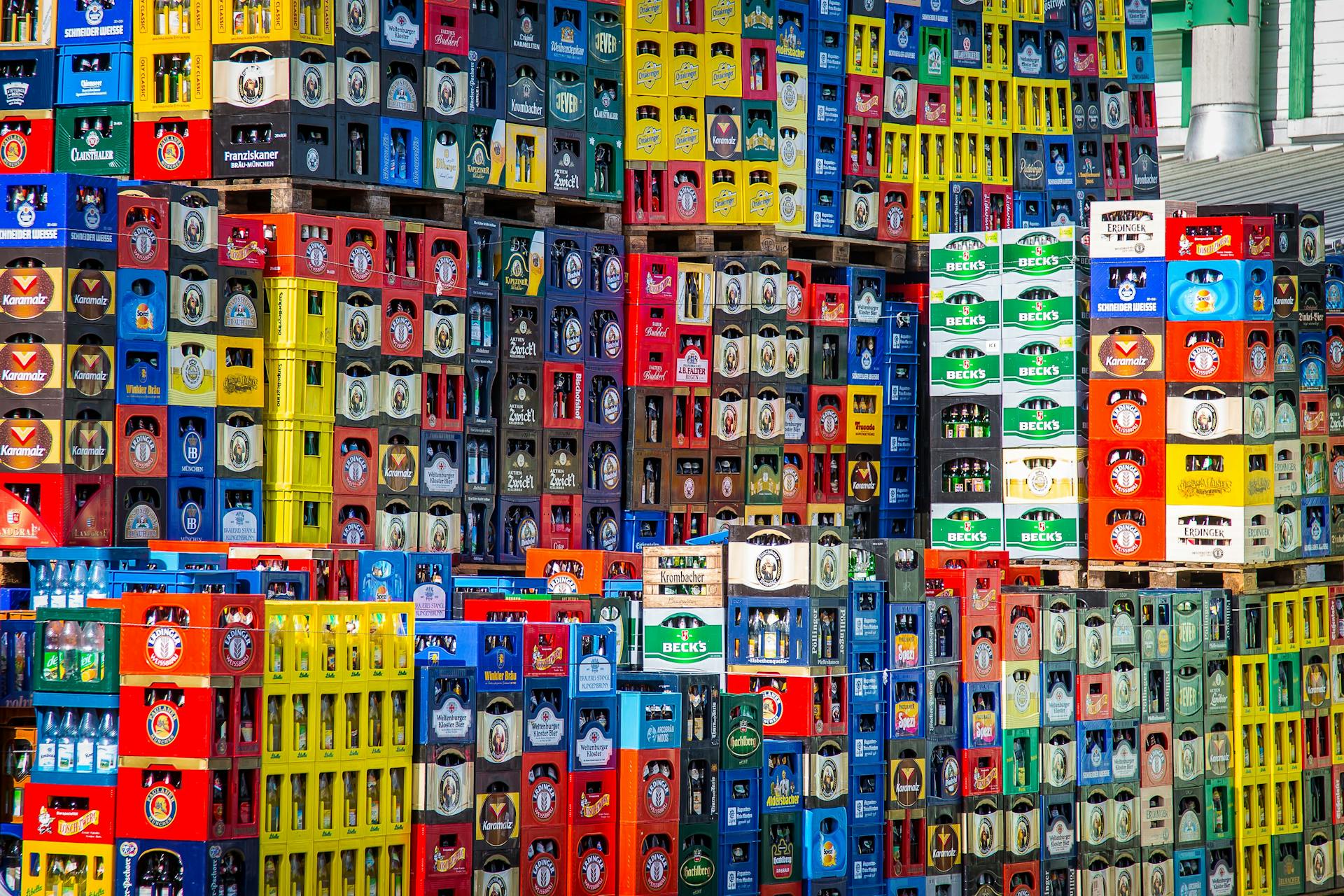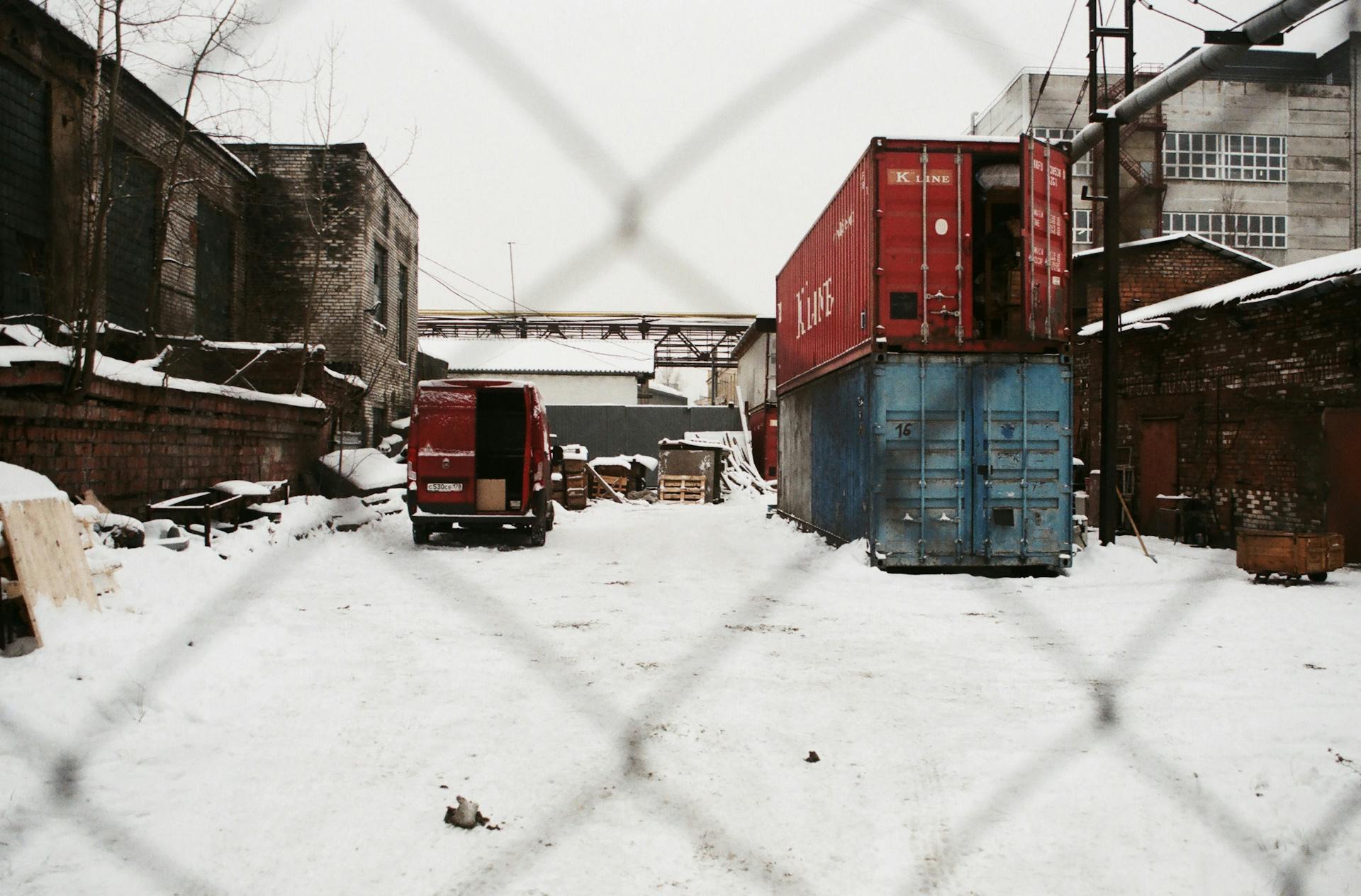
The Alang India ship breaking industry is a massive operation, with over 300 ships being broken down every year. It's one of the largest ship breaking yards in the world.
The industry is located in the state of Gujarat, India, and has been in operation since the 1980s. It's a vital part of the country's economy, providing employment to thousands of people.
The ship breaking process involves dismantling and recycling the ships' materials, such as steel, copper, and aluminum. This process is done in a highly regulated environment, with strict safety and environmental guidelines in place.
The industry is expected to continue growing in the future, with new technologies and methods being developed to make the process more efficient and sustainable.
Alang India Ship Breaking Yard
Alang India Ship Breaking Yard is the largest and most efficient ship breaking yard in the world, located in Gujarat, India. It has a massive capacity and has been in operation since the early 1980s.
The yard is home to over 150 individual ship breaking plots that span several kilometers along the coast. This impressive setup allows for the dismantling of a large number of decommissioned ships.
Alang Ship Breaking Yard was established in the late 1970s, with the government of India importing non-useable ships to be scrapped. The yard was chosen due to its favorable environmental conditions and high demand for steel and scrap.
The yard has a workforce of 40,000 workers living in surrounding shanty towns, with an additional 200,000 people involved in the business chain. This labor-intensive industry relies heavily on manual labor, with very little machinery used in the process.
Here is a breakdown of the number of ships broken at Alang Ship Breaking Yard between 1994 and 2002:
The first ship, MV Kota Tenjong, was broken down at Alang Ship Breaking Yard on 13 February 1983, marking the beginning of the yard's growth and expansion.
History and Overview
The Alang ship breaking yard in Gujarat, India has a fascinating history. Established in the early 1980s, it has grown exponentially to become the largest ship breaking yard in the world.
The yard's growth can be attributed to its favourable environmental conditions and high demand for steel and scrap in the region. A search mission by the Gujarat Maritime Board (GMB) in the late 1970s led to the selection of Alang as the ideal location for a ship breaking yard.
The first ship, MV Kota Tenjong, was broken down at Alang ship breaking yard on February 13, 1983, marking the beginning of the yard's growth. Since then, the yard has expanded northeast towards Sosiya in Gujarat.
Today, Alang ship breaking yard is renowned worldwide for its massive capacity and efficiency in dismantling decommissioned ships. The yard comprises over 150 individual ship breaking plots that span several kilometers along the coast.
Here's a snapshot of the yard's dominance in the industry:
Operations and Impact
Alang's operational scale is truly astonishing, with hundreds of vessels from around the world ending their voyages here each year, including supertankers, cargo ships, and passenger liners.
The industry provides employment to tens of thousands of workers, both directly and indirectly, making it a significant contributor to the local economy.
The salvaged materials, including steel, machinery, and other components, are recycled and repurposed, supporting various industries and contributing significantly to the local economy.
This massive operation is a testament to the importance of ship breaking in India, making Alang one of the largest in the world.
Readers also liked: Alang India
Operational Scale and Economic Impact
Alang Ship Breaking Yard is a behemoth in the industry, with hundreds of vessels from around the world ending their voyages there each year. This includes supertankers, cargo ships, and passenger liners, making Alang one of the largest in the world.
The yard provides employment to tens of thousands of workers, both directly and indirectly, contributing significantly to the local economy. This has a profound economic impact, with the salvaged materials being recycled and repurposed to support various industries.

The industry's operational scale is astonishing, with an average ship lifespan of 25-30 years before it becomes a hazard to the environment. Shipbreaking is the process of breaking down a vessel's structure for scrapping, including the removal of gear, equipment, or any component.
Here's a breakdown of the shipbreaking industry's economic impact in numbers:
This table demonstrates that Asian countries dominate the shipbreaking industry, with India and Bangladesh leading the way.
Environmental Considerations
The ship breaking industry has a significant environmental impact, but there are efforts underway to improve safety measures and reduce pollution. The biggest ship breaking yard in India has made significant advancements in recent years.
Pollution and health risks are major concerns if ship breaking processes are not managed properly. Hazardous waste is a significant issue that needs to be minimized.
International regulations and standards are being adhered to in order to implement greener and safer methods of ship recycling. These initiatives aim to protect the wellbeing of workers and the surrounding environment.
Technological Advancements
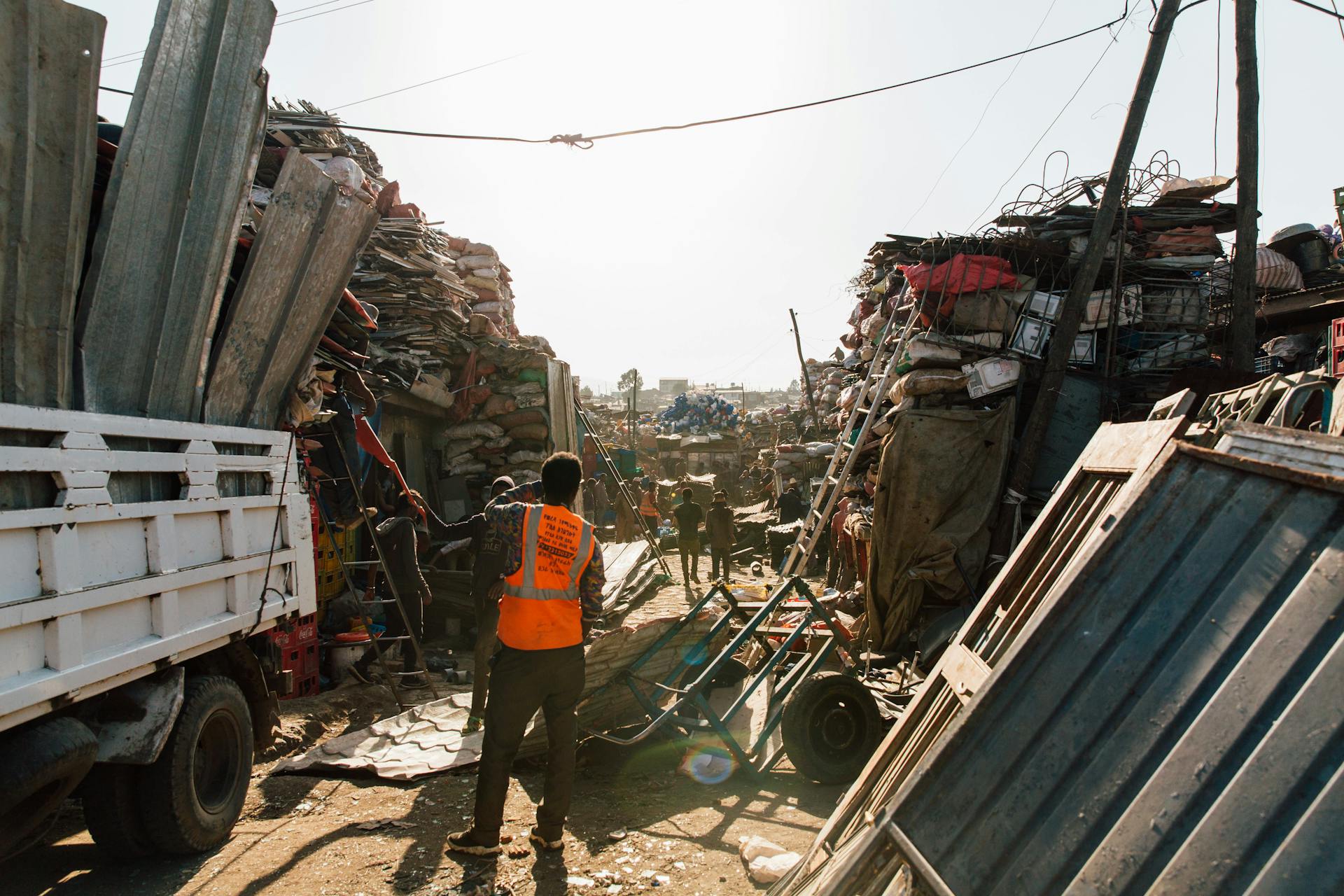
Alang is at the forefront of technological advancements in ship breaking, using innovative techniques and state-of-the-art equipment to enhance efficiency and safety.
High-capacity cranes are a key part of this technology, allowing for faster and more efficient dismantling of ships. Advanced cutting tools are also used to minimize waste and reduce the risk of accidents.
The yard's operations rely heavily on technology, which plays a crucial role in its success. From equipment maintenance to waste management, technology is used to streamline every aspect of the ship breaking process.
With ongoing investments and policy support from the government, Alang is expected to continue driving the industry's growth and adopting even more innovative solutions.
Notable Ships and Salvage
The Alang ship breaking yard in India has a long history of dismantling some of the world's most notable ships. One of the most infamous ships to be salvaged at Alang was the Regal V, also known as the Scandinavian Star, which was involved in a deadly fire in 1990.
In 2004, the Regal V was broken up at Alang, a grim end to a ship with a tragic past. The facility's capacity is impressive, with 183 ship breaking yards along 14 kilometers of coast.
The French aircraft carrier Clemenceau was another notable ship to be dismantled at Alang. Despite initial plans to break it up at the facility, the Clemenceau was eventually sent to a ship-breaking harbor in Britain after protests about improper disposal and mismanagement of toxic waste.
One of the largest ships ever built, the Seawise Giant, was disassembled at Alang in December 2009. Its massive size is a testament to the yard's ability to handle even the largest vessels.
Here's a list of some of the most notable ships salvaged at Alang:
- In 2004, the Regal V was salvaged at Alang.
- The French aircraft carrier Clemenceau was dismantled in Alang in 2009.
- The longest ship ever built, the Seawise Giant, was disassembled at Alang in December 2009.
Industry and Competition
Alang India Ship Breaking operates in a competitive industry with other large facilities around the world.
Other notable ship breaking yards include Aliağa Ship Breaking Yard in Turkey, Chittagong Ship Breaking Yard in Bangladesh, and Gadani ship-breaking yard in Pakistan.
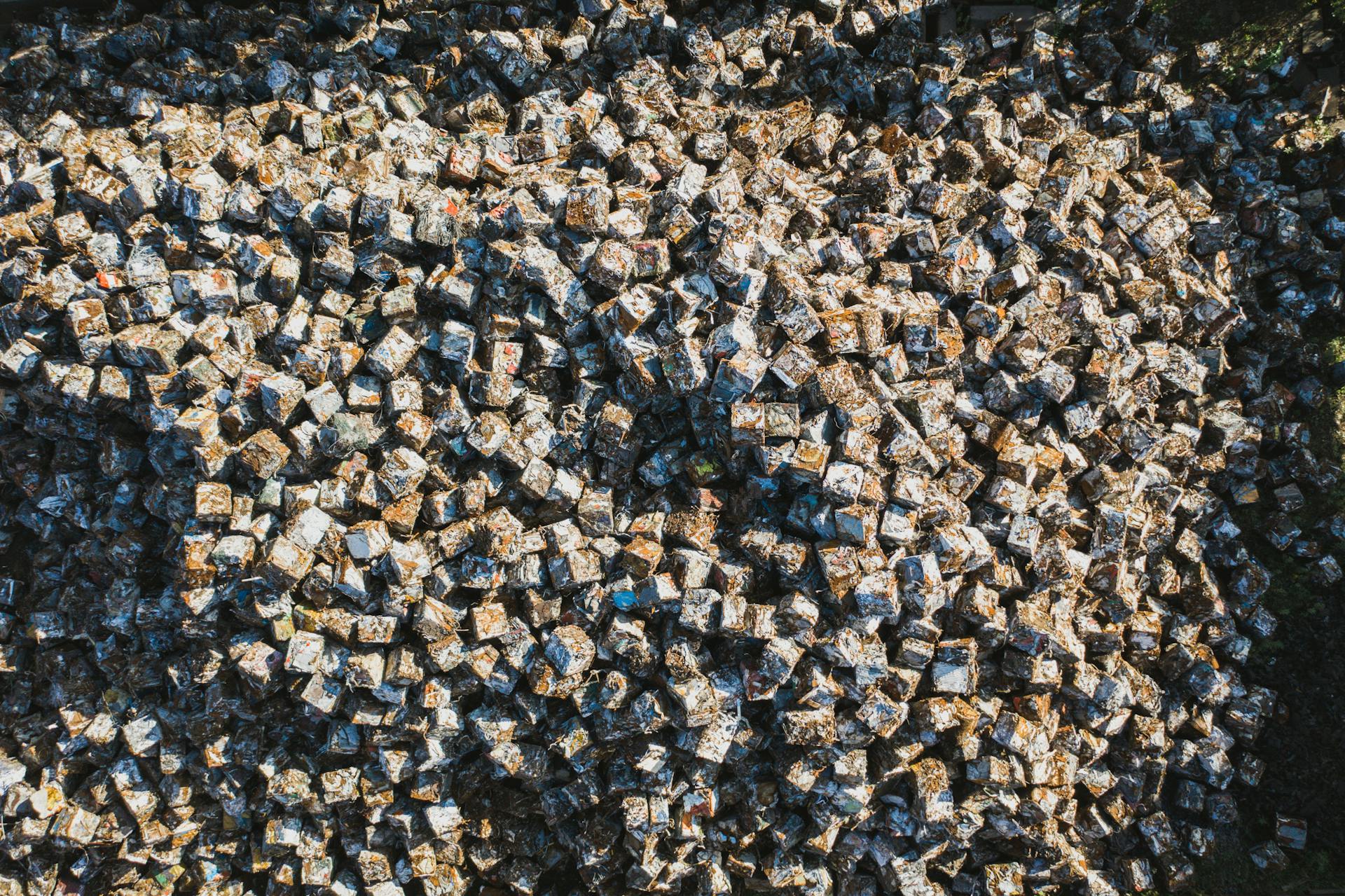
Alang's capacity is 4.5 million LDT, but it only managed 1.09 mn tonnes of LDT recycling in FY2022-23, its worst since 2007-08 when it managed 0.64 million LDT.
Shipbreakers in Alang face challenges complying with stringent regulations, whereas their competitors in Bangladesh and Pakistan operate under less stringent oversight.
Some shipowners send their vessels to Bangladesh and Pakistan by changing flags to African countries where laws are relaxed, in order to get a better price for their retiring ships.
This practice is made possible by the United Nations Convention on the Law of the Sea (UNCLOS), which gives primary responsibility for ships to their flag state.
Here are some key competitors in the industry:
- Aliağa Ship Breaking Yard (Turkey)
- Chittagong Ship Breaking Yard (Bangladesh)
- Gadani ship-breaking yard (Pakistan)
Frequently Asked Questions
How many people died in Alang Ship Breaking Yard?
At least 56 people have died in Alang Ship Breaking Yard since 2013, with a fatality rate significantly higher than other hazardous industries. This alarming rate led the Indian Supreme Court to take notice of the yard's safety concerns.
How many ship breaking yard are there in India?
India has over 150 ship breaking yards along its coast, making it a significant hub for ship recycling.
Sources
- https://en.wikipedia.org/wiki/Alang_Ship_Breaking_Yard
- https://www.kalthiashipbreaking.com/alang-ship-breaking-yard-gujarat-india/
- https://www.meremblasting.com/biggest-ship-breaking-yard-in-india-alang-gujarat
- https://www.vice.com/en/article/asias-largest-ship-breaking-town-is-beached-like-never-before/
- https://www.linkedin.com/pulse/unplanned-ride-alang-worlds-biggest-ship-breaking-yard-paujikeshra
Featured Images: pexels.com
